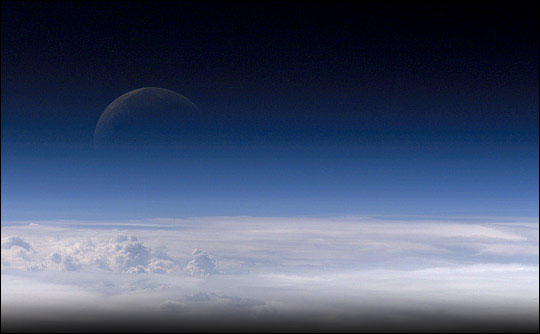 Ionosphere Joule heating doesn't heat the overall atmosphere, but it fuels electron precipitation!
Ionosphere Joule heating doesn't heat the overall atmosphere, but it fuels electron precipitation!
 Ionosphere Joule heating is not your typical kind of heat. This is changing the electron temperature through frequency, so although the over all temperature of the ionosphere may fluctuate and grow colder, the electron density and temperature can still be increased and fuel these secondary mechanisms and ultimately electron precipitation.
Ionosphere Joule heating is not your typical kind of heat. This is changing the electron temperature through frequency, so although the over all temperature of the ionosphere may fluctuate and grow colder, the electron density and temperature can still be increased and fuel these secondary mechanisms and ultimately electron precipitation.
 So take for example the warming of the troposphere due to in increase of solar radiation and water vapor, because the ozone layer is thinning due to electron precipitation and the increase of NO2. As the troposphere increases in temperature the statosphere and ionosphere actually becomes colder, but the electron precipitation continures because the energy is still being transfered though the electron gyration and heating.
So take for example the warming of the troposphere due to in increase of solar radiation and water vapor, because the ozone layer is thinning due to electron precipitation and the increase of NO2. As the troposphere increases in temperature the statosphere and ionosphere actually becomes colder, but the electron precipitation continures because the energy is still being transfered though the electron gyration and heating.
 TSI begins when the nonlinear fluctuations of the ionospheric plasma causes the electron heat to insulate itself and self-focus in an unstable form of magnification. Through this the thermal energy spreads through the plasma. Once TSI occurs the ionsophere is twice as sensitive to the gyro frequency.
TSI begins when the nonlinear fluctuations of the ionospheric plasma causes the electron heat to insulate itself and self-focus in an unstable form of magnification. Through this the thermal energy spreads through the plasma. Once TSI occurs the ionsophere is twice as sensitive to the gyro frequency.
 The chances for TSI are 5 to 10 times greater on gyrofrequencies of the 1st or 2nd harmonic, after that it creates a suppression.
The chances for TSI are 5 to 10 times greater on gyrofrequencies of the 1st or 2nd harmonic, after that it creates a suppression.
 So if you look at the instability magnification factor here you can see that once TSI sets in....gyro frequencies will now have 10 - 20 times the effect if not more. In fact according to the studies done by the UK on the Solar Power Systems lightning can increase this by a factor of 400.
So if you look at the instability magnification factor here you can see that once TSI sets in....gyro frequencies will now have 10 - 20 times the effect if not more. In fact according to the studies done by the UK on the Solar Power Systems lightning can increase this by a factor of 400.
 These effects multiply each other and spiral into a chaotic plasma environment that controls the amount of solar radiation that heats our habitat.
These effects multiply each other and spiral into a chaotic plasma environment that controls the amount of solar radiation that heats our habitat.
The FCC has no idea when they allocated the gyro frequency to the AM broadcast band.!



